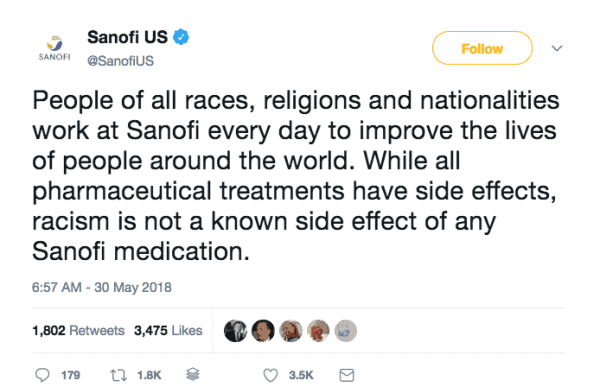
The principles of multichannel marketing are well established, but as the evolution of new technologies continues to allow for greater connectivity and integration between channels, does pharma need to embrace crosschannel or omnichannel strategies to keep up with stakeholders’ expectations?
In pharma, ‘channel’ is often used broadly to refer to the routes for communicating with customers. Multichannel relates to relaying a single communication objective using more than one channel.
Multichannel marketing first became familiar terminology when the internet became part of the marketing mix. At first, the different channels were completely separate. Crosschannel marketing has the subtle difference that the channels are connected together.
A typical example of crosschannel marketing is running an integrated campaign that involves using email and social media channels to reach your target audience and drive it to a website via calls to action. Omnichannel marketing not only uses multiple channels that communicate back and forth, but these channels also work seamlessly together, in parallel, to provide customers with a cohesive experience across all channels.
Disney is the master of omnichannel marketing and the de facto leader in the field. It has a stunning mobile-responsive website where users can buy Disney-branded merchandise, purchase Disney movie tickets and subscriptions, and most importantly, book holidays to one of the Disney theme parks.
After booking a holiday on the website, users can download the ‘My Disney Experience’ app to plan every detail of their trip, from accessing real-time wait times and parade showtimes, to using the GPS-enabled map to explore the resort and locate restaurants and other attractions. Furthermore, they can use the app to purchase theme park tickets, browse restaurant menus, make dining reservations and even start the hotel check-in process.
Disney’s brilliantly thought-through omni- channel experience shines at every step of the user journey, which continues with the use of its most unique tool, MagicBand – a secure, all-in-one device resembling a watch or a bracelet that works seamlessly with the My Disney Experience app and allows users to unlock their hotel door, check in at the entrances, charge food and merchandise purchases to their hotel room and even unlock special personalised experiences.
Applying Disney principles to pharma – we couldn’t, could we?
It is evident that Disney knows its audience very well and is an expert in refining the user experience, making sure the latter is personalised and totally integrated across physical devices and channels. It’s not an often-asked question, but can we learn anything from Disney and apply those learnings to pharma?
* Map the journey of the target audience. Whether they are patients or HCPs, we need to understand what kind of information your audience is looking for, and when and where.
* Tell a story and meet audience needs at every stage in the journey. It is important to bring the audience along its journey to prescribing or, in the case of patients, to perhaps asking their physician the right questions, by telling a compelling and cohesive story and overcoming barriers along the way.
* Develop content in a format your audience wants to consume. Modern life exposes us to vast amounts of information, and audiences are overwhelmed and distracted. We need to make it easy for audiences to consume our content using language and lexicon they are familiar with, and provide information in short relevant bites that is actionable in their daily lives.
* Link all content to communication goals. For maximum impact, all content needs to have a red thread linking it back to your communication objectives. Everything leads in one direction… towards your goal!
* Measure success and adapt. You probably won’t get it right the first time, and even if you do, fine-tuning will optimise success. Using metrics to measure performance against KPIs is key. And there is an almost limitless amount of metrics that can be derived from digital channels.
But is pharma utilising them to their full potential? Should we be analysing customer experience metrics such as net promoter score, customer satisfaction, churn rate, retention rate, customer lifetime value and customer effort scores in finer detail?
But after all, pharma is not Disney…
Due to the regulatory environment, pharma is unique in that what is communicated to HCPs changes dramatically as an asset moves from bench to brand. From publications in phase 2, to unbranded awareness campaigns in phase 3, through to promotional campaigns at launch, there is a need for content to evolve and to continuously optimise both the messages and channel selection to meet the changing communication priorities. This constant need for reinvention is at odds with the increasing pressure on budgets as a result of pharma companies investing more and more of their spend in R&D.
There is a clear need to select priority channels, and to do this we need to truly understand our customers and how their habits are changing. To optimise content development spend, a COPE (Create Once Publish Everywhere) approach makes sense, where content and assets are developed and reused across the channels.
Our audience is also distinct in that it demands credible, accurate information. No matter what the channel, content needs to have scientific integrity, empathy and impact. Our audience, whether it’s HCPs or patients, demands content that has its origins firmly rooted in science, as empathy can mean different things, from supporting patients and carers, to understanding the needs of time-challenged HCPs and how to provide them with the actionable information they are looking for.
Rising above the noise is an exponential challenge. As products enter increasingly crowded marketplaces, differentiation is key; not only communicating insightful messages that resonate with the audience, but also in terms of transmitting the message in novel and impactful ways through insightful channel selection.
Becoming more agile is one way, Oreo capitalised on the massive power outage inside of the Mercedes-Benz Superdome in New Orleans by tweeting: ‘Power out? No problem, you can still dunk in the dark.’
For those who think this is not a possibility in the pharma industry given the lengthy approval process, just consider the response to US comedienne Roseanne Barr blaming the sleep aid product Ambien for a racist post she made.

Sanofi’s Twitter reply to Roseanne Barr
Sanofi US tweeted: ‘People of all religions and nationalities work at Sanofi every day to improve the lives of people around the world. While all pharmaceutical treatments have side effects, racism is not a known side effect of any Sanofi medication.’ These agile responses caught the eyes of millions and, when well executed, can certainly get you noticed.
The power of impactful design, whatever the channel, should also never be underestimated. But most of all we need to continue to innovate, and surprise our audience. Despite increasing usage and demand amongst HCPs globally, digital channels are still under-represented in the pharma marketing mix. Channels such as YouTube, while immensely popular among both HCPs and patients, are considered off-limits by many companies, while patient advocacy groups capitalise on them for disease awareness.
Our audience expects to be able to access information on pharma products in the way it does any other information in daily life, and there are lots of technologies with huge potential waiting to be adopted by pharma. Yes, there are hurdles to overcome, but these are not unsurmountable.
New technologies that are ripe for adoption:
* How can we use new technology, such as voice?
* How can we capitalise on social media?
* Is there a place for online communities?
* How can we unify data from different channels and use it to build seamless and personalised experiences?
* How can we utilise AI to optimise our digital strategies?
Karen Isherwood is Director Client Services at MediTech Media Ltd
Harry Politis is Digital Product Director at SynaptikDigital
Viorica Gheorghita is Senior Digital Product Manager at SynaptikDigital




